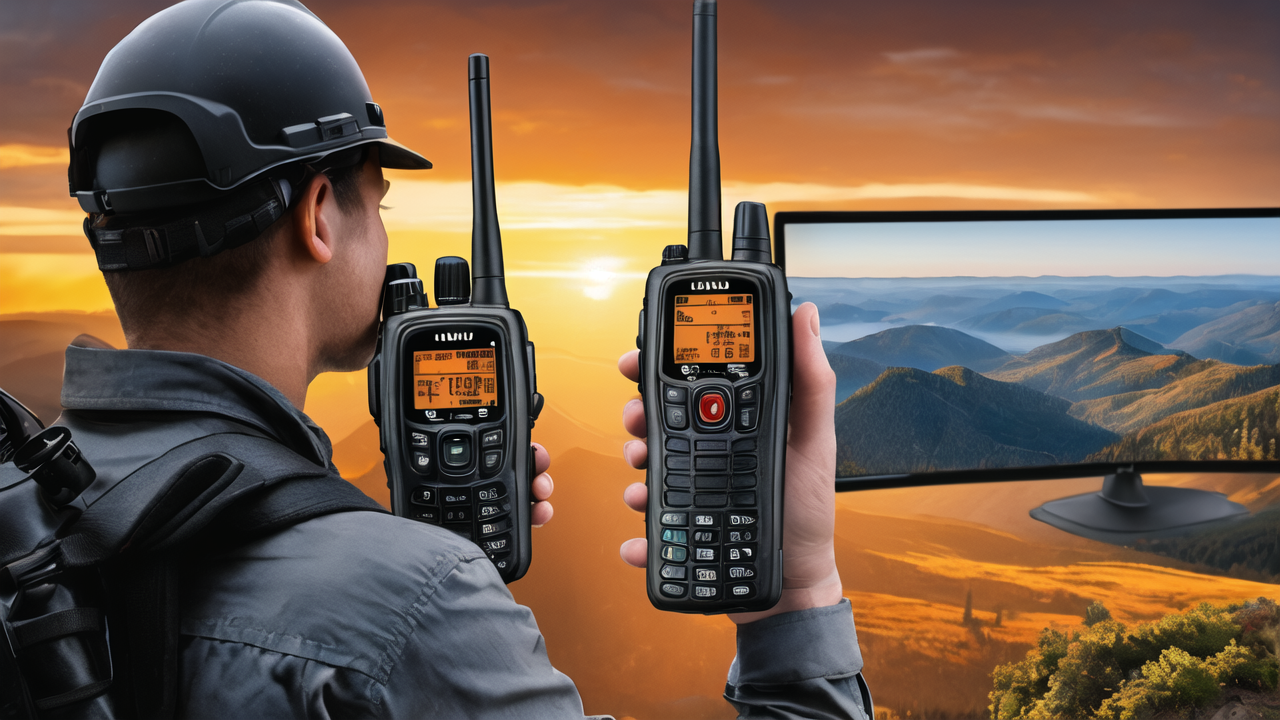Understanding the Landscape of Walkie Talkies
The Evolution of Two-Way Radios in the United States
Two-way radios have come a long way since their inception. They first gained popularity during World War II. After the war, they found use in civilian life. Early models were bulky and had limited range.

Over time, walkie talkies became smaller and more powerful. The advent of transistors in the 1960s was a game-changer. It allowed for more compact designs. By the 1980s, handheld radios were common in many industries.
Today's walkie talkies are far more advanced. They offer clear audio, long range, and many features. Some even integrate with smartphones. The evolution continues as technology improves.
Key Features that Define High-Quality Walkie Talkies
High-quality walkie talkies share several important features:
- Range: The best models can communicate over long distances.
- Audio clarity: Clear sound is crucial for effective communication.
- Battery life: Long-lasting batteries ensure reliable use.
- Durability: Rugged construction withstands tough conditions.
- Channel options: Multiple channels allow for private conversations.
- Weather resistance: Many top models are waterproof or water-resistant.
- Additional features: Some offer GPS, Bluetooth, or emergency alerts.
These features set professional-grade walkie talkies apart. They ensure reliable communication in various settings.
Regulatory Standards for Professional Communication Devices
In the US, the FCC regulates walkie talkies. They fall under 'Part 95' rules for personal radio services. Different types have specific regulations:
- FRS (Family Radio Service): No license required, limited power output.
- GMRS (General Mobile Radio Service): License required, higher power allowed.
- MURS (Multi-Use Radio Service): No license needed, specific frequencies.
Professional users often need licensed radios. These allow for more power and range. Businesses must follow strict rules about frequency use. Compliance ensures clear channels and prevents interference.
Analyzing Top Walkie Talkies in the Market
Best Features of Leading Brands
Top walkie talkie brands offer a range of impressive features:

- Motorola: Known for durability and clear audio.
- Kenwood: Offers advanced digital features.
- Midland: Provides excellent weather alert systems.
- Cobra: Focuses on user-friendly interfaces.
- Icom: Specializes in marine and aviation models.
These brands constantly innovate. They add features like GPS tracking and Bluetooth connectivity. Some offer noise cancellation for clear communication in loud environments. Others focus on extreme durability for harsh conditions.
Leading models often have customizable settings. This allows users to tailor the device to their needs. Many also offer compatibility with older models. This is crucial for businesses with existing radio systems.
Comparative Analysis: Cost vs. Quality
When it comes to walkie talkies, you often get what you pay for. However, the most expensive option isn't always the best choice. Here's a breakdown:
- Entry-level ($20-$50): Basic features, short range, good for casual use.
- Mid-range ($50-$150): Better range and durability, suitable for most users.
- High-end ($150+): Professional features, longest range, most durable.
Professional users should focus on mid to high-end models. These offer the reliability needed for critical communications. For casual users, mid-range options often provide the best value.
Consider long-term costs too. Cheaper models may need frequent replacement. Higher-quality devices last longer and may be more cost-effective over time.
Use Cases: Who Relies on Walkie Talkies?
Walkie talkies are essential in many fields:
- Construction: Coordination on large job sites.
- Security: Quick communication for guards and staff.
- Event management: Organizing large gatherings.
- Emergency services: First responders rely on clear communication.
- Hospitality: Staff coordination in hotels and resorts.
- Outdoor recreation: Hikers and campers use them for safety.
- Education: Schools use them for safety and coordination.
Each field has unique needs. Construction sites need rugged, long-range devices. Hotels might prioritize discreet, compact models. Understanding these needs is key to choosing the right walkie talkie.
Strategies for Choosing Your Best Walkie Talkie
Evaluating Your Specific Communication Needs
Choosing the right walkie talkie starts with assessing your needs:

- Range: How far apart will users be?
- Environment: Will it be used indoors, outdoors, or both?
- Frequency of use: Occasional or constant communication?
- Number of users: How many people need to stay connected?
- Privacy needs: Is secure communication necessary?
Consider the specific challenges of your environment. Noisy worksites may require noise-canceling features. Outdoor use might need weather-resistant models.
Think about future needs too. Will your communication requirements change? Choosing a flexible system can save money in the long run.
The Importance of Durability and Reliability
For professional use, durability is crucial. Look for:
- IP ratings: Higher ratings mean better protection against water and dust.
- Drop resistance: Many professional models can survive falls from several feet.
- Temperature tolerance: Some can operate in extreme heat or cold.
- Battery life: Long-lasting batteries ensure reliable communication.
Reliability goes beyond physical toughness. Clear audio and consistent signal strength are vital. Test devices in your actual work environment if possible. This ensures they perform well where you need them most.
Future-Proofing Your Communication Investment
Technology evolves rapidly. When choosing walkie talkies, consider future compatibility:
- Digital vs. analog: Digital offers more features but may not work with older systems.
- Software updates: Some models allow for feature upgrades via software.
- Expandability: Can you add features or integrate with other systems later?
- Regulatory changes: Stay informed about potential FCC rule changes.
Consider the lifespan of your investment. Quality walkie talkies can last for years. Choose a system that can grow with your needs. This may mean spending more upfront for long-term savings.
Remember, communication is critical in many professions. Investing in quality walkie talkies can improve efficiency and safety. Take the time to choose the right system for your needs.


